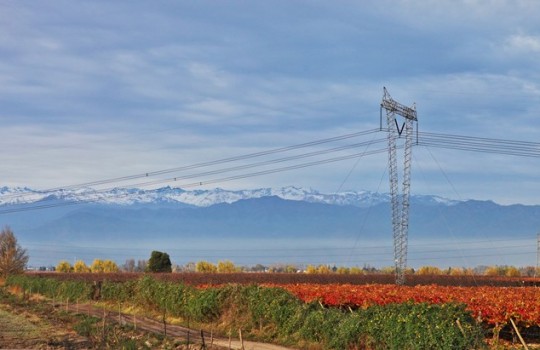
The lower increase in the local economy would directly affect the consumption of residential users. This removes the possibility of new auctions until at least 2019.
Slowdown will lead to 28% of energy awarded in tenders not being required in 2019
(Diaro Financiero) The last electricity tender for regulated customers will be remembered for the historic low in contract prices, which reached record levels, with offers as low as US$ 24.8 per MWh.
However, at the same time, a phenomenon that will develop over the next six years was identified: that not all the energy that is committed will be required. A Systep analysis, considering the projections made by the National Energy Commission, based on information from generators, established that there will be an average overcontracting of 18% between 2017-2023. These levels will steepen to 28% in 2019.
The real growth in demand has been in the debate in recent times. The parameters have been adjusted downward. For example, in 2014 it was estimated that by 2030 demand would be almost 74 thousand GWh, but in 2017 the projection was lowered by 36%, to 47 thousand GWh.
[Inversión ingresada al SEA cae 21% en 2017 arrastrada por proyectos eléctricos]
The lower demand has been seen in both regulated and free customers, such as mining companies, which are only now beginning to reactivate projects.
The main reason for this variation, experts explain, is the change in the country’s economic growth expectations, which directly influences consumption.
Systep’s general manager, Rodrigo Jiménez, explains that “this is due to changes in GDP expectations: residential and commercial demand is directly correlated with this factor. Another effect is the adjustment of the initial base to the real demand in each update, which, if it is lower than the projections, affects the total energy projected to be consumed”.
Jiménez argues that to avoid overcontracting, it would have been advisable to delay the last bidding process by a couple of years, as they can be carried out up to five years in advance. This would have provided a clearer picture of how demand will evolve.
With this scenario of slack supply until 2024, it is expected that there will be no new tenders for up to two more years.
Growth of free customers
Regarding the consequences that this overcontracting could have on generators, Jorge Moreno, partner at Inodú, points out that “a lower growth in demand from regulated clients could leave certain companies more exposed to the spot (variable) market, although this situation is expected to be temporary”.
In the short term, another factor that will influence the demand of regulated customers is the transfer to free customers by companies seeking better prices in their contracts, which will be reflected in the 2017-2019 period.
Large shopping center operators and office building managers have initiated processes to change their contracts, which will reduce a significant volume of demand.
For this reason, it is the free customers who are concentrating the greatest interest on the part of the electricity companies, since, in addition to the renewal of contracts that are coming up in the next few years, it is estimated that the reactivation of large projects, mainly mining, will cause the focus of the generators to move towards this sector.



